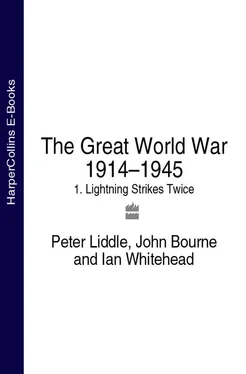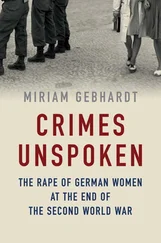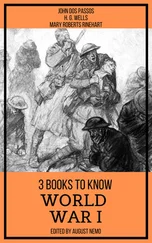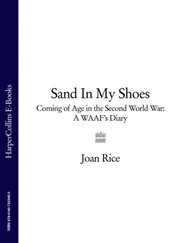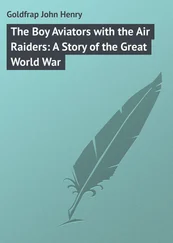While awaiting joining instructions he continued his legal studies. On the formation of the Local Defence Volunteers (afterwards the Home Guard) as a private, he joined the local unit. His opinion of its possible effectiveness, despite the undoubted enthusiasm of its members, most of whom were between 45 and 60 years or in reserved occupations, was somewhat circumspect:
‘We were issued with a .303 rifle and ten rounds of ammunition with which to repel the German paratroops… Eventually to my surprise I received orders to report to the Infantry Training Centre of the Cameronians (Scottish Rifles) at Hamilton Barracks. I duly reported there on 14 November 1940, and found myself as a rifleman, in hutted accommodation in the company of some 30 young men from Lanarkshire and Glasgow, little of whose conversation I would at first understand. My comrades in arms were good-hearted and loyal to the group. They seemed to have readily, if resignedly, accepted the need to serve, accepted the firm but fair discipline, and showed keenness to learn. Regimental traditions and standards were soon imposed. The training, particularly in weapons, was of a high standard.
My Company Commander was Capt G. R. S. Drought. He was killed in action in Sicily in 1943. He had been an Army Boxing Champion, and it became clear to me that if I wanted a commission I had better enter the boxing ring. I did so one bitterly cold November night, suffering from a head cold and confronted by one Corporal Telfer, who seemed much bigger than me. He struck me on the nose in the first round, and I was covered in blood, but survived to be beaten on points over the three rounds…’
This exploit had evidently impressed the Company Commander, who put Scott forward for an interview with the Commanding Officer, as a result of which he was recommended for a commission. Scott attended 168 OCTU at Droitwich, then at Morecambe.
‘At the conclusion of the four-months OCTU course, which did not impress me, cadets had the opportunity to choose three Regiments in order of preference. The time spent at Hamilton had been an excellent introduction to basic full-time soldiering, and I had no hesitation in selecting the Cameronians as my first choice, being thankful to gain acceptance.’
There was then no pre-OCTU course lasting six weeks, during which those unlikely to make the grade, for whatever reason, were weeded out. This did not become part of officer training until later in the war. Both in training and quality of instruction, in the early stages of OCTUs’ existence it seems that they left a lot to be desired. Most who had been members of their university or school Officer Training Corps or Army Cadet Force felt that they had learned little new from the course. Standards did improve later as instructor cadres began to be filled with battle-experienced officers and NCOs.
Michie, by this time commissioned (in March 1940) and, like McNeil, a subaltern in the 6th Battalion The Cameronians, was very much of the same opinion:
‘Early in 1940 I was sent on a short Junior Leader’s Course at Esdaile, Kilgraston Road, Edinburgh, where an instructor read us a book called Infantry Section Leading. This excellent publication was issued to London Scottish NCOs in the summer of 1939, and I used to study it in the London Tube on my way to work – all the instructor did was to read from it… I could have taught him!’
Both Michie and McNeil served with the Battalion during its short stay in France in 1940. Of this period, Michie recalled:
‘The platoon anti-tank weapon was the Boyes Anti-Tank Rifle, which could hardly open a tin of sardines. The rifleman in charge had more than likely come with me a week earlier as one of the 275 other ranks who joined the 6th. He had to confess that he had never fired the weapon, and in fact didn’t know how to handle it.’
MacNeil remembered:
‘I’d had very good instruction on rifle, pistol, Bren Gun, 2-inch Mortar. Tommy Guns were issued in France in June 1940 – without even an instruction book. We relied on memories of US gangster films to get it working, per Edward G. Robinson.’
While the experience of recruits in 1939 was broadly similar to that of their predecessors in 1914, their instruction was different. They were more cynical about the nation’s leaders, and less inspired by calls on their patriotism to rally them to the colours. The war was seen as a necessary evil to combat Nazi Germany’s arrogance and drive for domination, but less of a crusade than it had appeared to many of those who rushed to enlist in 1914. Once part of an army unit, they settled down in much the same way as their fathers had 25 years earlier, accepting the trials and tribulations of wartime with as good a grace as possible.
Lieutenant-Colonel Sir John Baynes Bt., Independent Military Historian, Llanfyllin, UK.
Sir John Baynes served in the British Regular Army with the Cameronians (Scottish) Rifles and the Queen’s Own Highlanders. He has written numerous military biographies and related books and is best known for his outstanding work, Morale: A Study of Men and Courage. The Second Scottish Rifles at the Battle of Neuve Chapelle (1967).
Cliff Pettit, Independent Historian and Author, Alnwick UK.
Cliff Pettit is a retired solicitor who served as an infantry platoon commander in North West Europe in the later stages of the Second World War. He has an extensive knowledge of the First and Second World War battlefields of Western Europe. He has presented, advised and assisted in television documentaries on Gallipoli, the Somme and Third Ypres.
Milligan, Spike, Hitler: My Part in His Downfall (London: Michael Joseph Ltd, 1971). A humorous but nevertheless realistic account of barrack room life and the attitudes of conscript recruits.
Whiting, Charles, Poor Bloody Infantry , Chapters 1and 2(London: Guild Publishing, 1987)
Chapter 3
Waging the undersea war: a British perspective
Jeff Tall
‘It is essential to keep the standard high – nothing can be neglected – it is not a kindness to overlook slackness or mistakes, it is really great cruelty to do so – cruelty to wives and relatives of the man you let off and his shipmates and to yourself. There is no margin for mistakes in submarines; you are either alive or dead’ 1These words, spoken by Admiral Sir Max Horton when Flag Officer Submarines in 1941 to all submarine officers and men in Malta, carry a universal truth for all mariners, not just submariners. To cover the whole breadth of wartime maritime experience in the context of Horton’s exhortation would fill several volumes; however, even the most gnarled sea-dog would probably concede that examination of the British submariner’s story during the World Wars encapsulates his experience sufficiently well to justify this chapter’s narrow focus on the craft and its inhabitants.
Of all the British fighting arms of the two World Wars, the greatest similarities are to be found in the Royal Navy Submarine Service. The platform itself had developed little in the inter-war years and, whatever improvements had been made, the tradition in the Royal Navy of putting the requirements for equipment above the comfort of the crew, prevailed. True, the submarine had become larger, which meant that it now had more torpedo tubes and greater reload capacity; the gun had a longer range and a bigger arsenal; its endurance had been enhanced through more powerful engines and higher fuel storage capacity; communications were now an integral part of submarine warfare; and a ranging form of ASDIC for mine detection had been added to its tactical capability. But all these enhancements called for a higher manning requirement, so there was no relief on the demands for internal space.
Читать дальше
